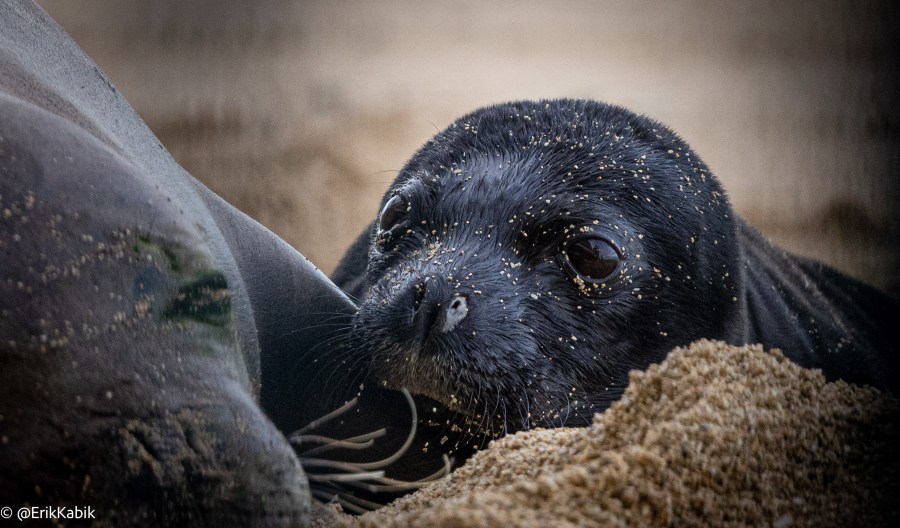HONOLULU (KHON2) — Hawaiʻi is currently celebrating the birth of a new monk seal pup. The pup and its mother are currently located at Kaimana Beach in Waikikī and are under constant watch to ensure their safety.
In light of all the attention this family is receiving, KHON2.com thought it’d be a good idea to go through some of the facts about monk seals in the hope that a more educated public will be a more empathetic public.
Hawaiʻi’s indigenous monk seals are amongst the most endangered marine mammals worldwide.
These amazing creatures are brown to light gray. They can weigh up to 600 pounds, and as with most species, the females generally tend to be larger than males.
Endemic to the Hawaiian archipelago, these seals have no populations anywhere else in the world. This makes critical. Despite federal protections under the Endangered Species Act (ESA) and being listed by the International Union for Conservation of Nature (IUCN), their numbers have dwindled since the 1950s due to various threats.
The current population is estimated at 1,570, with the majority in the Northwestern Hawaiian Islands and about 400 in the Main Hawaiian Islands.
Diet-wise, monk seals are generalist feeders. This means they consume a variety of sea life including eels, lobsters and reef fish.
They are adept at deep diving and can reach depths over 1,800 feet. They can also hold their breath for up to 20 minutes.
On land, they prefer resting on sandy beaches and rocky areas.
They reach reproductive maturity between five and ten years old and typically give birth annually to one pup. The pups tend to change colors from black when they are born to gray or brown as they grow up.
The mother seal nurses the pup for approximately six weeks before it is weaned.
These seals continue to face multiple threats, with the most severe being disease, in particular toxoplasmosis.
Toxoplasmosis, spread by feral cats via the parasite Toxoplasma gondii, is particularly deadly for seals. Contact with this parasite causes severe health issues and often death.
Other significant threats include entanglement in fishing gear and marine debris. Both of which can cause severe injury or death.
Male aggression, particularly in the 1980s and 1990s, also contributed to their decline. This aggression often involved attacks on pups, skewed sex ratios and resulted in numerous fatalities.
Habitat loss due to sea-level rise and human activity further threatens these seals, especially in their pupping areas.
Hurricanes have destroyed critical habitats in the French Frigate Shoals, a major birthing site. Moreover, human interactions, including harassment and intentional killings, pose ongoing risks. Despite rare, some monk seals have been killed by human actions, including shootings and blunt force trauma.
Conservation efforts are comprehensive and tend to involve strict viewing guidelines to avoid disturbing the seals.
The public is urged to maintain distance, manage pets responsibly and report any seal sightings or distress to authorities.
Additionally, addressing the spread of toxoplasmosis by managing cat populations and reducing marine debris are critical steps in safeguarding these animals.
While Hawaiian monk seals are protected under various federal and state laws and efforts are being made to manage and mitigate threats, significant challenges remain.
You can click here for a more detailed analysis provided by DLNR. You can click here to access the DLNR video that gets up close and personal with the monk seal family.
Continued public education and conservation measures are vital to ensure the survival of this unique marine species, which plays an integral role in the ecosystem of the Hawaiian Islands.
